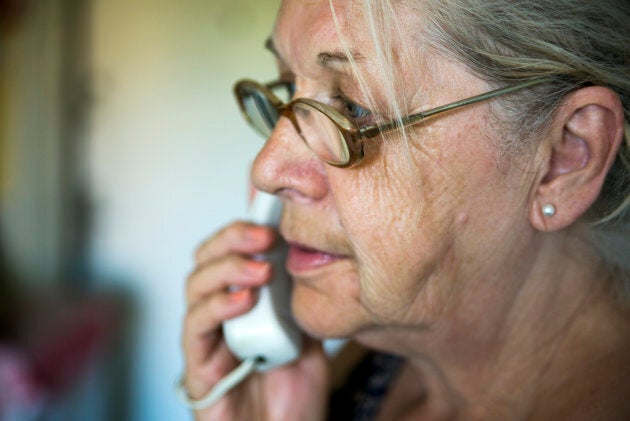Canadians for Tax Fairness applauds Canada Revenue Agency's announcement last week that they will allow about 950,000 low- and fixed-income Canadians to file their income tax returns by answering a series of questions over the telephone.
In addition to raising revenue for the government, the tax system plays a vital role in helping to deliver social benefits to millions of Canadians including the Canada Child Benefit, the GST Credit, the Working Income Tax Benefit for low-income Canadians and the Guaranteed Income Supplement for seniors.

In recent years, the federal government has made some improvements to the system by, for example, automatically registering those who qualify for the GST credit based on information filed through income tax returns and automated child benefits applications when parents register the birth of their newborn.
But eligibility for many social benefits is still dependent on an income tax return being filed, even if you do not have any income. And many low-income Canadians do not file those returns because of multiple barriers.
Statistician Richard Shillington estimates that five to 10 per cent of eligible low-income people are not getting the GST credit, five to 10 per cent are missing out on the Child Tax Benefit, and as many as 75 per cent of those who would be eligible are not getting the Working Income Tax Benefit.
Navigating the Canada Revenue Agency website, understanding the bureaucratic language and filling out the forms is difficult, even for those with a post-secondary education.
These rates are much higher for marginalized communities such as First Nations and recent immigrants, who also have much higher levels of child poverty. It is estimated that 38 per cent of First Nations children and 30 per cent of black children live in poverty, compared to 17 per cent overall. Campaign 2000 estimates that 50 per cent of families in First Nations communities are not filing income tax returns and therefore are not accessing the up to $6,400 a year per child they are entitled to through the Canada Child Benefit.
Many recent immigrants and Indigenous people face greater challenges in filling out tax returns and application forms because of language and literacy barriers. Navigating the Canada Revenue Agency website, understanding the bureaucratic language and filling out the forms is difficult, even for those with a post-secondary education.

The way the government announced this tax filing by phone initiative did not make clear what this would mean for many low-income Canadians, according to John Stapleton, who has been studying the problem of low uptake of social benefits by low-income Canadians. He suggests they should tell the public, "We think we have money we owe you, but we are not quite sure of the amount. If you give us a call, we can find out the amount and arrange to send it to you."
Being able to file by phone will be a big improvement in accessibility. But the CRA needs to ensure this initiative is properly staffed. The recent auditor general's report noted that many Canadians were having a very difficult time getting through to anyone on the phone at the CRA offices.
More blogs about taxes on HuffPost Canada:
While the filing by phone option is a big step forward, further efforts are needed to ensure the children, low-income Canadians and seniors who need help the most are receiving it.
The federal government could learn a lot from a recent Ontario government initiative by the Ministry of Advanced Education and Skills Development to promote student assistance improvements and funding to youth in Indigenous communities. They partnered with the Chiefs of Ontario to help train over 300 Indigenous education counsellors about the new OSAP benefits specific to Indigenous learners, and sent staff to numerous central locations and first nations across Ontario to inform indigenous education counsellors about the new government support available for post-secondary education. This effort has resulted in a 36 per cent increase in Indigenous students going on to post-secondary education.
Ultimately, we might hope that the Canada Revenue Agency would prepare income tax returns for us.
The federal government needs to look at this type of direct, proactive community engagement around tax filing and ensuring those who most need social benefits are informed about the supports they are entitled to.
And staffing help centres in CRA offices where someone can go and get help filling out their income tax return in person would help get many young people started in the annual habit of filing a return. One of my sons had not filed a tax return after several years of starting to work, partly because he had lost some of his T4 slips from the various jobs he had had. But more than 15 years ago, he was able to go to a CRA office in Montreal and get them to provide the missing T4 slips and help him fill out his tax return. This kind of personalized assistance is no longer available. It should be restored as investing in helping people to get started on filing tax returns would pay off in the long run.

Ultimately, we might hope that the Canada Revenue Agency would prepare income tax returns for us. This is what tax authorities in Norway, Denmark and Sweden do for their citizens. For most people, CRA already has all the information that is needed to complete a tax return, as employers and charities are required submit salary and donation information to the CRA.
The revenue agency would send out initial tax return forms annually to all who sign up with the information it already has on file about each individual's incomes, deductions, taxes paid and other relevant information. Individuals would then be required to correct this information as necessary and verify its accuracy. This would not only make tax time a lot less expensive, time consuming and painful for Canadians, but it would also help better ensure that all Canadians, and especially lower-income people, receive the different benefits and credits delivered through the tax system that they are entitled to.
Tax filing by telephone is a step forward in the CRA recognizing barriers for low-income Canadians. We hope it is just a first step, as there is much more that can and needs to be done to ensure that those who are entitled to social benefits are able to get them.
Follow HuffPost Canada Blogs on Facebook
Also on HuffPost: